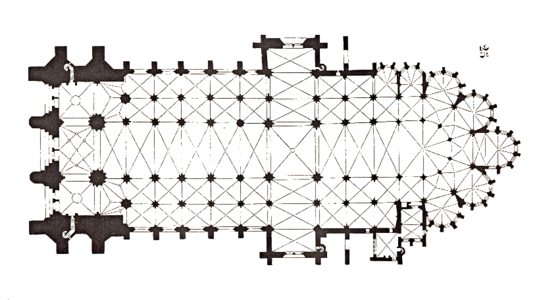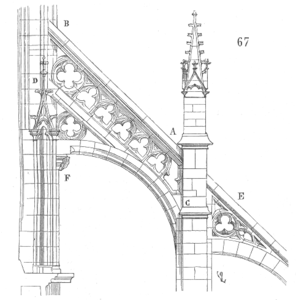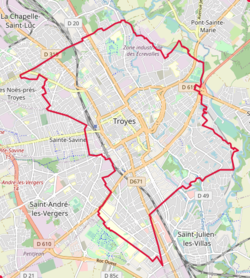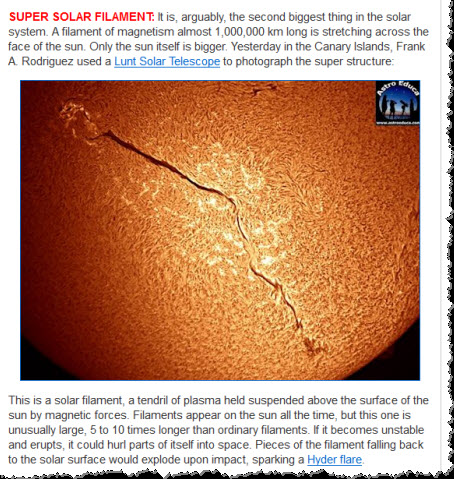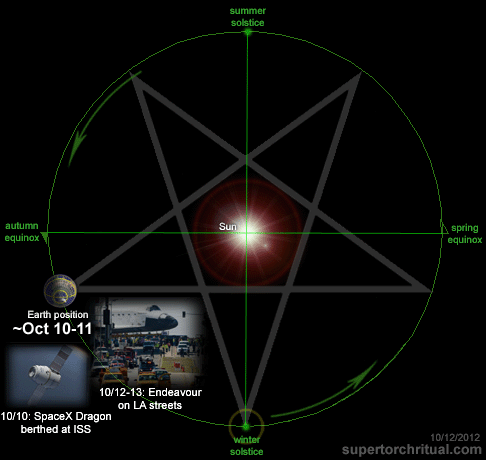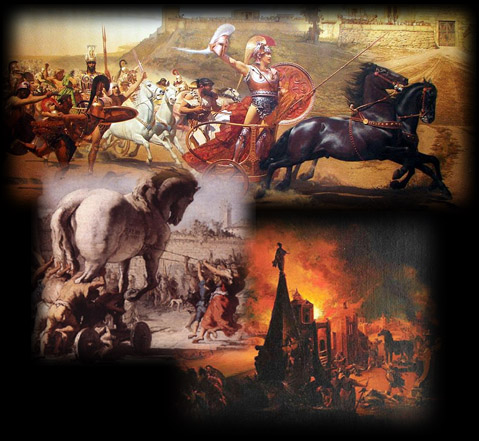|
|
General: TROYES CATHEDRAL FRANCE CATHOLIC CHURCH GOTHIC BERNARD OF CLAIRVAUX MADELEINE
إختار ملف آخر للرسائل |
|
جواب |
رسائل 1 من 40 في الفقرة |
|
Troyes Cathedral
Cathedral in Aube, France / From Wikipedia, the free encyclopedia
DEAR WIKIWAND AI, LET'S KEEP IT SHORT BY SIMPLY ANSWERING THESE KEY QUESTIONS:
Can you list the top facts and stats about Troyes Cathedral?
Summarize this article for a 10 year old
SHOW ALL QUESTIONS
Troyes Cathedral (French: Cathédrale Saint-Pierre-et-Saint-Paul de Troyes) is a Catholic church, dedicated to Saint Peter and Saint Paul, located in the town of Troyes in Champagne, France. It is the episcopal seat of the Bishop of Troyes. The cathedral, in the Gothic architectural style, has been a listed monument historique since 1862.
Quick Facts Troyes Cathedral Cathédrale Saint-Pierre-et-Saint-Paul, Religion ...
Close
Earlier cathedrals
According to local church tradition, Christianity was carried to Troyes in the third century by the Bishop of Sens, Savinien, who sent Saint Potentien and Saint Sérotin to the town to establish the first church. The house where they lived is believed to have stood on the same site as the cathedral; and excavations in the 19th century found traces of Gallo-Roman building under the sanctuary. A 5th-century bishop of Troyes, Lupus was credited with saving Troyes from destruction by Huns by leading a delegation of clerics to appeal to Attila, in 451. An enamel of Lupus healing a deaf young woman is displayed in the cathedral; the old cathedral is visible in the background.
The first church was rebuilt and enlarged in the 9th century, but it was badly damaged by the Norman invasions at the end of the same century. It was rebuilt by Bishop Milo through about 980 in the Romanesque style. Fragments of the sculptural decoration of this old church were found in 1864 and are displayed in the south collateral aisle of the present church.
In the 12th century, the Romanesque church was enlarged with the addition of a bell tower and a chapel dedicated to the Virgin Mary. The church was the site of the Council of Troyes that opened on 13 January 1129, hosted by Pope Honorius II. At the urging of Saint Bernard of Clairvaux, the Council granted official status to the Order of the Knights Templar, which became immensely influential throughout Christendom.
-
An enamel of Lupus of Troyes, a 5th-century bishop, healing a deaf woman. The old Cathedral is visible in the background.
-
Gothic cathedral
In 1188 a fire destroyed much of the town, and badly damaged the cathedral. Reconstruction began in 1199 or 1200, started by Bishop Garnier de Traînel. Once the construction was underway, the Bishop departed on the Fourth Crusade in 1204, and brought back to Troyes a collection of precious relics for the cathedral treasury.
The new church was constructed in the Early Gothic style, inspired by the earlier Basilica of Saint Denis and Sens Cathedral, and by Chartres Cathedral and Notre Dame de Paris, which both were under construction at the same time. Work was well along by 1220 when the lower portions were completed and the upper walls were begun. Unfortunately, in 1228 a hurricane struck the half-finished structure, destroying the lower collateral aisle on the south side of the choir and damaging the upper walls. The upper walls were rebuilt between 1235 and 1240, and the builders took advantage of the extra time to adopt a more modern element first used at the Basilica of Saint-Denis; they filled the walls of the triforium, at the midlevel of the wall, with stained glass, bringing an abundance of light into the middle of the church.
The transept was finally vaulted in about 1310, and the spire was raised over the transept, but due to a series of economic difficulties, work slowed down. In 1365 a tornado destroyed the spire of the transept; it was not restored until 1437. More seriously, in 1389 the roof of the nave was struck by lightning, starting a fire that damaged the masonry below. This led in 1390 to the collapse of the rose window of the north transept. The rose was replaced and reinforced in 1408–9, but forty years later again showed signs of weakness. It was reinforced with a stone bar, and the portals were reinforced with new buttresses. Work resumed in 1450 under Bishop Louis Reguier, who worked to complete the upper portions of the nave.
Flamboyant and Renaissance additions (15th–17th century)
In May 1420, the Treaty of Troyes was signed in the cathedral between Henry V of England, his ally Philip of Burgundy and Queen Isabel, wife of the mad Charles VI of France whereby the throne of France would pass to Henry on the death of Charles rather than to Charles' son the Dauphin. Henry married Catherine of Valois, the French king's daughter, shortly afterwards in Troyes, either at the cathedral or the church of St Jean.
In July 1429, Joan of Arc escorted the Dauphin to Mass in the cathedral en route to proclaiming him Charles VII of France at Reims Cathedral, in contravention of the recently signed Treaty of Troyes.
At the beginning of the 16th century, a new building campaign began, this time in the late Gothic Flamboyant style. It was conducted by the master builder Martin Chambiges, whose works included the transepts of Sens Cathedral (1494), Beauvais Cathedral (1499) and Senlis Cathedral (1530). The new west front he designed followed the model of Reims Cathedral and other 13th century cathedrals, with three portals separated by strong buttresses, each topped by a high pointed arch.
The first level of the west front was finished by 1531–1432. The 12th-century bell tower and porch was demolished. The two levels were complete by 1554, and work began on the towers. Work on the north tower, called the Saint-Pierre tower, went slowly; it was not finished until 1634, and had just two of the smaller clochetons or steeples on the top corners instead of the four planned. The planned south tower was never started.
Vandalism and preservation (19th–20th century)
The cathedral suffered major damage during the French Revolution. The west front was particularly targeted; the sculptures that filled the tympanum over each portal were smashed. The lower stained glass windows in the choir were destroyed or taken apart. Fortunately, many of the upper windows were spared and still have their original glass. On January 9–10, 1794, a jeweller named Rondot led a mob that looted the treasury, seizing and melting down the previous gold and silver sacred objects.
During the rest of the 19th and 20th centuries, the cathedral underwent several campaigns of restoration. In 1840 the wall of the south transept, built on an unstable foundation, had to be reinforced to prevent it from collapsing, and between 1849 and 1866 all of the walls on the east side and then the pillars of the choir were reinforced. Many of the 13th-century windows were restored and put back into place. During both the First and Second World Wars, the stained glass was removed and put into safe storage, and the building suffered no significant harm. Restoration and repair of the west facade continued into the 21st century.
The cathedral, containing the nave, choir and apse with radiating chapels, has two principal aisles and two further subsidiary aisles. It is 114 metres (379 feet 6 inches) long and 50 metres (162 feet 6 inches) wide (across the transepts), with a height from the top of the vault of 29.5 metres (96 feet); the height of the cupola and the tower is 62.34 metres (202 feet 7 inches). The surface area of 1,500 m2 (16,000 sq. ft.),
West Front
The west front of the cathedral, with the three portals which serve as main entrances, was almost entirely redone beginning in 1507 in the Flamboyant style by master builder Martin Chambiges. It is divided into vertical sections containing the portals by four massive vertical buttresses and covered with elaborate arcades and tracery. Each of the three portals is crowned by a high pointed gable. The gable over the central portal originally held statues of the Virgin Mary, Saint John and Saint Mary Madeleine. An immense flamboyant rose window fills the space over the central portal. On top of the rose window, interrupting the balustrade, is the coat of arms of the city of Troyes
The west front suffered the most damage during the Revolution. The tympanum over the central entrance, which originally contained scenes from the Passion of Christ is bare; the statuary was smashed. The voussures and embracements that frame the portals preserve the original lavish vegetal decoration. The many niches and galleries on the west front contained statues, which were also destroyed, though the fleur-de-lis royal emblems on the balustrades remain. The sculpture of the tympanums of the north and south portals originally celebrated the lives of Saint Peter and Saint Paul, the two patron saints of the cathedral. These were also destroyed during the Revolution.
The north and only tower, finished in 1634, is built in a more classical Renaissance style. It has two narrow windows on each side, between the supporting buttresses. each side, and decoration of slender columns. The top has a balustrade with two cupolas. An arch was planned to connect the two towers, and its foundation was built, but the south tower was never constructed.
North and south sides and transepts
The north and south walls of the cathedral are supported by high flying buttresses, given additional weight by stone pinnacles. The walls are divided midway by the north and south transepts. The space between the buttresses is almost entirely filled by small chapels, lower than the central vessel of the nave and choir. A balustrade connects the roofs of the chapels, and another balustrade runs along the edge of the upper wall, at the base of the roof. The tracery of high windows and of the chapels, especially those closer to the west end of the cathedral, is flamboyant and elaborate, while the tracery toward the east end, built in the 13th and beginning of the 14th century, is simpler.
Midway along the sides are the two transepts, which protrude just beyond the chapels on either side of them. They were built in the 13th century, and each was originally decorated with sculpture in the tympanum, and in the voussures of the arches over the portals. The south portal sculpture depicted the Last Judgement and Apocalypse. The transept sculpture, like that of the west front, was destroyed during the Revolution. A few pieces are preserved in the Musée des beaux-arts de Troyes.
The north transept underwent major rebuilding. The buttresses with pinnacles were added in the 15th century, along with lancet and quadrafoil windows in the triforium, or middle level. and a balustrade with ornament representing the keys of Saint Peter. The original rose window of the transept fell in 1390, and was replaced with a Rayonnant window in the early 15th century. Later in the same century, a vertical stone bar was placed in front of the rose window to secure it.
The original south transept from the 13th century collapsed and was entirely rebuilt between 1841 and 1844. The rose window was made identical to that in the north facade, and the decoration was simplified.
|
|
|
|
جواب |
رسائل 26 من 40 في الفقرة |
|
|
|
|
جواب |
رسائل 27 من 40 في الفقرة |
|
While the original sculpture at Troyes has largely disappeared, the cathedral still has a large number of its original stained glass windows, installed from the 13th to 16th century, along with some windows incorporating sections of medieval glass, for a total of 1,600 square meters of stained glass. The windows illustrate vividly the evolution of stained glass in France, from the 13th-century windows, with their deeply-colored, thicker pieces of glass assembled like mosaics, to the 15th- and 16th-century windows, using silver stain and enamel painting to create the effects of shading and perspective similar to those of Renaissance painting.
-
The Apostles - Lower windows of the nave, (south side Bay 51) (14th century)
-
Saint Peter (south side-Bay 47) (14th century)
-
The Annunciation (south side Bay 47) (14th century)
-
Apostles - Upper windows of nave (Bay 51)
-
Sainte Catherine of Alexandria and Saint Maurice of Agaune (16th c.)
-
The Mystical Wine Press - Bay 49 (1625)
The nave has glass from a wide variety of periods and styles – sometimes in the same bay. Some of the oldest windows, from the end of the 13th and beginning of the 14th century, are in the lateral chapels. Most of these underwent considerable restoration in the 19th century.
Other bays were given new windows in the 16th and 17th centuries. Of these, some were designed by Linard Gontier, a prominent Troyes artist of the Renaissance. His most famous window in the cathedral is the "Mystical Wine Press", inspired by the prominence of the champagne from the region. It depicts Christ with grapevines sprouting from this chest, and a variety of scenes associating grapes and wine with the apostles.
Choir and ambulatory
[edit]
-
Windows of the axis chapel of the apse, dedicated to the Virgin Mary (13th–19th c.)
-
The Flight to Egypt and Adoration of the Magi (13th century)
-
Musician in the Tree of Jesse window, 13th c. Chapel of Joan of Arc, (Bay 31)
-
Detail of 15th-century window (Bay 38)
-
King Philip II of France (Choir, Bay 52)
-
Powers of the Ecclesiastical hierarchy (Bishops and Kings) (Bay 52)
-
Upper windows of the choir (Bay 208); Parable of the Wise and Foolish Virgins
The choir and the ambulatory, to the east of the cathedral, still have much of their original stained glass. The oldest windows are in the radiating chapels on the east, some dating to 1200–1230. The higher windows and those of the triforium date to about 1235–40. Some of these windows are more recent, but include portions of the older original glass, which had not yet been installed at the time of the hurricane of 1228. While many of the lower windows were considerably modified, the upper windows of the choir are mostly in their original state.
The transept windows have a mixture of styles. The windows on the west are from the 14th century, while those on the east were replaced in the 16th century with windows with tracery of the Flamboyant Gothic style. The triforium windows on the west were made in the 19th century, while the triforium windows on the east include vestiges of restored 13th-century glass.
-
The west rose window (partly hidden by organ)
-
Rose window of the north transept
-
Detail of the north rose window
The rose window at the west end of the nave, from 1239, was made by the artist Jean Soudain on the theme of the celestial court. The view of this window from the ground floor is largely obscured by the organ.
The rose window in the north transept, ten meters in diameter, was installed in the 15th century to replace the earlier window, which fell in 1340. It is in the Rayonnant Gothic style, with its tracery radiating outward from the center. The rose window on the south transept is a copy of the north window.
The grand organ is located on a tribune over the portal on the reverse side of the west front. It was originally built in 1730 for Clairvaux Abbey in Burgundy. When the abbey was closed in 1793 during the Revolution, the organ was nationalised and sold at auction. It was purchased by the overseers of Troyes Cathedral, but was not put into place until 1808. It replaced the original Troyes organ, built in the 15th century and placed next to the choir. That organ had been destroyed in 1792. The installation of the new organ was controversial because it largely blocked the view of the west rose window from the nave and choir.[24]
The organ has fifty-five jeux or sounds, played with four keyboards and a set of pedals. The instrument was classified as an historical monument in 1963, and the case in 1974.[25] The organ is decorated with statues of angels and atlantes.
The cathedral has a second, smaller organ, which is located in the choir. This instrument was built in 1865 and was restored in 1987. It has thirteen jeux, played with two keyboards and a set of pedals.
Troyes Cathedral has four bourdons, heavy bells which made a deep note, for tolling on solemn occasions. Each has a name, and all were made in the early 19th century, replacing the early bells taken out and melted down during the French Revolution.
- Petrus Carolus - (4500 kilos, made in 1827)
- Paulus Ana - (3,269 kilos, made in 1813)
- Savinianus - (2,437 kilos, made in 1813)
- Marie - (2000 kilos, made in 1827)
-
The Coffret of Troyes (Ivory, 11th century)
-
The Stuart Cross, made of crystal
-
Reliquary of Saint Bernard of Clairvaux, with silver, copper and enamel (12th century)
The treasury of the cathedral was constructed at the beginning of the 13th century within the choir, next to the apse. It was particularly designed to display the collection of sacred relics which the Bishop Garnier de Traînel had brought back to France from the Fourth Crusade. Some of the relics and other valuable objects were used as ransom for the captive King Francois I in 1525, and others were lost during the Revolution, but the collection was gradually rebuilt. It has a particularly large collection of medieval enamel art, made by local craftsmen in the 12th century, as well as vestments, reliquaries and other medieval liturgical objects. Notable objects include the coffret of Troyes, an ivory chest of Byzantine craftsmanship from the 11th century.
Possible Indian connection
[edit]
Among the stained-glass windows is one which appears to have a representation of the famous Indo-Parthian king Gondophares who was ruling in ancient Taxila from 20 to 41 CE, in what is now north-western Pakistan.[27]
According to the legends and traditions contained in the Acts of Thomas, and preserved by the Indian Christians of St. Thomas, the Apostle Thomas fled to the East after the crucifixion. He stayed for some time at Gondophares' court where Thomas is said to have built a palace for him before heading on to southern India where he was, according to the legend, martyred near modern Chennai (Madras) [28]
https://en.wikipedia.org/wiki/Troyes_Cathedral |
|
|
|
جواب |
رسائل 28 من 40 في الفقرة |
|
The region around the Pipe Nebula (B78), the main part of the naked-eye formation of dark nebulas called the Dark Horse. In photos it breaks up into patches of dark nebulosity, including the tiny Snake Nebula (B72) at centre in Ophiuchus.
I shot this the morning of May 5, 2014 from the Four Bar Cottages near the Arizona Sky Village near Portal, Arizona. This is a stack of 5 x 3 minute exposures with the 135mm telephoto lens at f/2.8 and filter modified Canon 5D Mark II at ISO 1600. It is one segment of a larger multi-panel mosaic.
|
|
|
|
جواب |
رسائل 29 من 40 في الفقرة |
|
 ["The Lion of Amphipolis" originally standing on top of the tomb] ["The Lion of Amphipolis" originally standing on top of the tomb]
...as it resonated so heavily with the whole "Dark Horse"/Sphinx/lion/underworld theme we've been tracking all year. Many of my previous articles including Horus of the Horizon (Aug 19) & October Deep Impact - Martian Dark Horse (Oct 1/9) kept stressing the significance of the Dark Horse motif in connection with Katy Perry's "Dark Horse" music video prominently featuring a sphinx... 
...in which Katy spends most of her time in front of the sphinx's chest, where the star Regulus ("heart star") would be in Leo. Regulus annually unites with the Sun around August 21-23...
https://www.goroadachi.com/etemenanki/rosetta_code.html |
|
|
|
جواب |
رسائل 30 من 40 في الفقرة |
|
Mayan Goat Surprise
DSCOVRY, Super Bowl, Mayan/Solar Doom
By Goro
February 13, 2015
[The following is based on Part 9 & Part 13 of my "Super Bowl decoding" series I've been doing on STRUG/Super Torch Ritual Underground.]
Let's get you started...
Now that NASA/NOAA's DSCOVR has been launched into space (by a SpaceX rocket), I'd like to bring your attention to one of this year's Super Bowl commercials... namely the Discover card one ( video). It's not just the name ( Discover/DSCOVR) that draws our attention to it, but also the goat in it. The Sun is in the constellation of Capricorn/Goat from Jan 20 through Feb 16, and the Chinese Year of the Goat will start on February 19th. The " Birthday" surprise seems to allude to the latter (birth = beginning) and hints that we are in for a "surprise" event around that time. We've already discussed how there's a lot going on around that date [...] The timing of DSCOVRY's launch (Feb 11) confirms the pattern: Goat => Baphomet => pentagram => ~February 11... Also telling, the same day DSCOVR was launched, February 11, the captain of the doomed cruise ship Costa Concordia was found guilty for his role in the disaster off the shore of " Goat Island" ( Isola del Giglio). That was in 2012 (January 13-14), resonating with the movie "2012".  
It's not just the ships. The catastrophes in this 2012 story are ultimately caused by... the Sun.

DSCOVR is all about monitoring the Sun (solar wind, coronal mass ejections) for potential danger to Earth!
Not only that, "2012" - the Mayan year - is also identified with undeniable precision in the Discover card commercial with the number "773" displayed on the phone.
If you count back "773" days from and including February 1st, 2015 (Super Bowl day), you'll arrived at December 21, 2012... the "end" date of the Mayan calendar!
12/21/2012 was also the winter solstice, the angle of which is marked by the " Tropic of Capricorn". "Capricorn" is the (horned) Goat.

 [Rio de Janeiro in 2012 poster] [Rio de Janeiro in 2012 poster]
The "solar doom" storyline is also something we had found encoded in the DSCOVR launch timing via the late October 2014 X-class solar flares and the movie Knowing.
It's fascinating as well as chilling how many Knowing-related world events we've seen of late, right around the time of the Super Bowl and DSCOVR's launch...
First of all, the New England Patriots won the Super Bowl...
New England includes the states of Maine, Massachusetts, New Hampshire, Vermont, Rhode Island, and Connecticut. But the team itself is based in the Greater Boston Area including Lexington. That's exactly where the story of Knowing is set.

There the story begins with a time capsule... just as in real life a time capsule was discovered and opened in Boston just recently (Dec-Jan 2015).
The 2015 Super Bowl was played in Phoenix (Glendale)...
...a city repeatedly mentioned in Knowing (conceptually what the story is about, i.e. Earth destruction and New Earth).
Even more compelling, not one, not two, but three major world events of February 3rd, 2015 collectively alluded to Knowing.
One...
[Video of the scene]
The train crash in Knowing *also* happened in New York.
Three... (warning: disturbing images)
Katy Perry also wore a fiery outfit during her Super Bowl halftime show.
Quite... disturbing. What the hell is going on?
Well, for one, it tells us very loudly that the pattern we've been tracking is real... scary real. And two, it tells that we are probably still in for some deep impact event, comparable in magnitude to Sumatra/Pope shift. Something potentially momentous is underway, a certain big "surprise" in/for the Year of the Goat. We'll see soon enough...
This is only a small portion of what's happening in this year of... many things.
|
|
|
|
جواب |
رسائل 31 من 40 في الفقرة |
|
That last brings to mind the Trojan Horse, in the Greek tradition called the "Wooden Horse"...
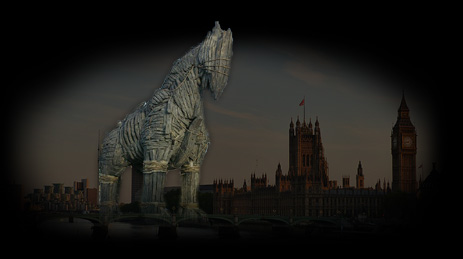
...of the Trojan War, ultimately started by the Golden Apple of Discord.

That's our super theme and we've been tracking it very closely for a few years now, especially this year when Venus has been in its Evening Star phase or Hesperus in Greek from which derives the name of the nymphs " Hesperides" who tend the garden in which golden apples are grown. The Evening Star will attain its maximum brightness in December 2013 (around Dec 8-11). A little later in the same month, there is going to be an Orange Alignment, which is our unique term for a Venus-Sun-Mercury alignment, a very reliable omen/time marker for a certain type of major world events including severe earth changes. In many languages, oranges are called "golden apples". Thus Orange Alignment = Golden Apple Alignment.
It will be a very special alignment this time indeed for various reasons. For one, it will coincide with the winter solstice, exactly one year after the "end" of the Mayan calendar. The winter solstice is also pinpointed by the latitude of two Brazilian cities Rio and (more precisely) Sao Paulo sitting on the Tropic of Capricorn marking the angle of the winter-solstice Sun reflected on the surface of the earth.  |
|
|
|
جواب |
رسائل 32 من 40 في الفقرة |
|

April 5-6, 2009
Italy (L'Aquila) earthquake near Rome (~300 dead)
 
'Gotta Be Somebody' crossing over into reality
Time mirroring via Venus (Amor/Roma)

|
|
|
|
جواب |
رسائل 33 من 40 في الفقرة |
|
Pentagram pinpointing Enterprise arriving in the Big Apple...
Pentagram pinpointing Endeavour rolling through LA (and Dragon roaming the sky)...
(Note: My previous article Golden Apple highlighting the Trojan theme was posted hours before the armed conflict erupted. Pattern projection => fulfillment.)
"It's all connected"...
SpaceX Marks the Spot (goroadachi.com) |
|
|
|
جواب |
رسائل 34 من 40 في الفقرة |
|
Trojan Horse of Troy
Submitted by Iza on Sun, 03/01/2020 - 17:21. Last modification: Sun, 03/01/2020 - 17:21
Archaeological site:
 Trojan Horse of Troy
Description:
This text is a fragment of a guidebook to Troy "The Secrets of Troy (TAN Travel Guide)".
The tale of the Trojan Horse is one of the most frequently told stories from the mythical Trojan War. It tells about the trick employed by the Greeks who were tired of besieging Troy for a decade. Cunning Odysseus, the legendary king of Ithaca, suggested building an enormous wooden horse. When the construction was ready, the elite of warriors hid inside, while the remaining Greeks pretended to sail away, bored of the war. The jubilant Trojans wheeled the horse into the city and started the celebrations. Undercover of the night, the Greeks sneaked out of the horse, opened the gates of Troy, and the Greek army entered the city, destroyed it, and killed its inhabitants.
The fundamental question arises after hearing the tale of the Trojan horse: why would the Greeks build a model of this animal and not another? There are many interpretations of the story. The most straightforward explanation is that the horse was the emblem of Troy, so the Trojans willingly accepted such a gift.
Another speculation states that the horse was a battering ram, such as used at the time by the armies. These devices were covered with wet horse hides to protect them from fire. The horse could also be a ship with the hidden warriors, as ships were called sea-horses, for instance in the Odyssey.
Finally, a more complicated theory states that the Trojan Horse did not exist in any material form but was a metaphor for an earthquake that destroyed the walls of Troy, letting the Greeks inside. This speculation is supported by the fact that Poseidon was not only the god of the seas but of earthquakes and horses too.
The modern wooden replica of the Trojan Horse was created in 1975 by the Turkish architect İzzet Senemoğlu. It is possible to get inside the horse and climb up to its two levels. There are windows on both of them, offering an overview of the site. The model of the Trojan Horse, 12.5 meters high, was built of 25 cubic meters of pinewood, brought from the Kaz Mountain. This mountain, in ancient times known as Mount Ida, is situated some 50 km to the south-east of Troy. It was the setting of several important episodes of the Trojan War. It was also the place where the Olympian gods sat and watched the progress of the epic fight. Another model of the Trojan Horse, used in the filming of the movie "Troy" from 2004, stands on the quay in the city of Çanakkale, the main base for the tours of Troy.
Getting there:
Go through the entrance to the archaeological site of Troy, situated next to the ticket office. The main sightseeing route goes straight on, but you can see the model of the Trojan Horse standing on a square, slightly to your right. At the square, there is also a toilet, the only one at the whole site, as well as the official museum shop where you can buy souvenirs, maps, and books devoted to Troy and other archaeological sites in Turkey.
https://turkisharchaeonews.net/object/trojan-horse-troy |
|
|
|
جواب |
رسائل 35 من 40 في الفقرة |
|
|
|
|
جواب |
رسائل 36 من 40 في الفقرة |
|
|
|
|
جواب |
رسائل 37 من 40 في الفقرة |
|
|
|
|
جواب |
رسائل 38 من 40 في الفقرة |
|
|
|
|
جواب |
رسائل 39 من 40 في الفقرة |
|
|
|
|
جواب |
رسائل 40 من 40 في الفقرة |
|
|
|
 أول أول
 سابق
26 a 40 de 40
لاحق سابق
26 a 40 de 40
لاحق
 آخر
آخر

|
|
| |
|
|
©2026 - Gabitos - كل الحقوق محفوظة | |
|
|






